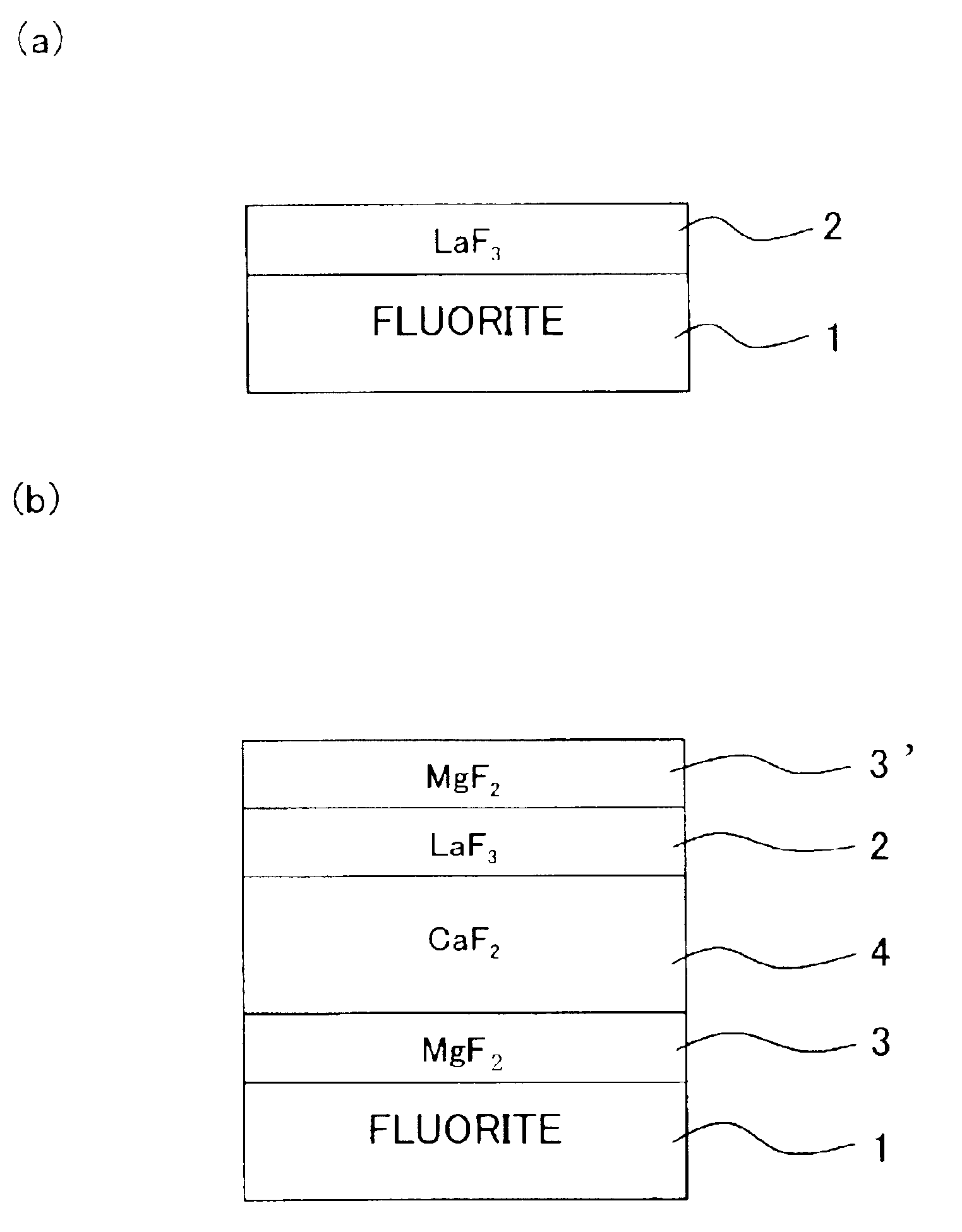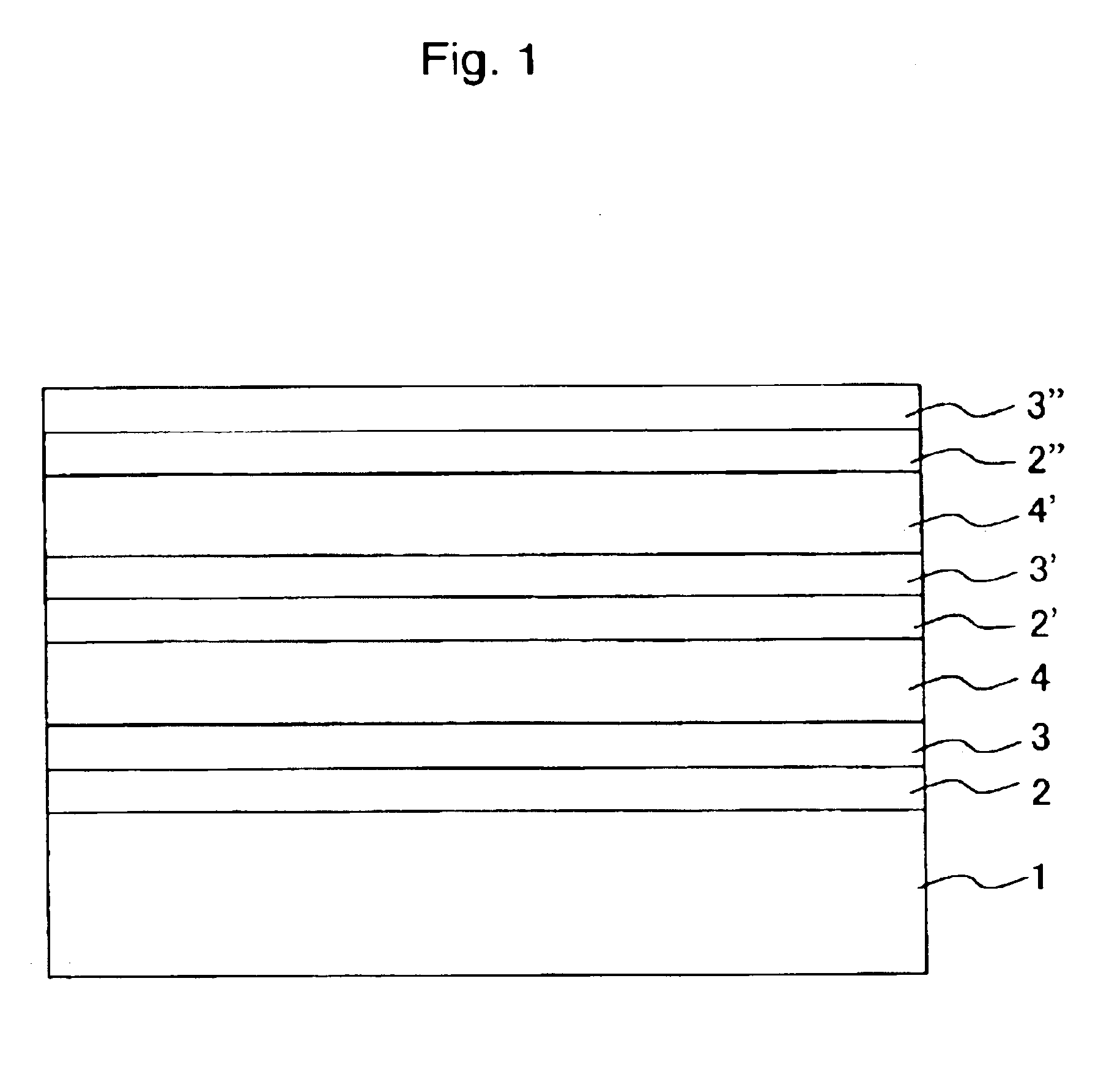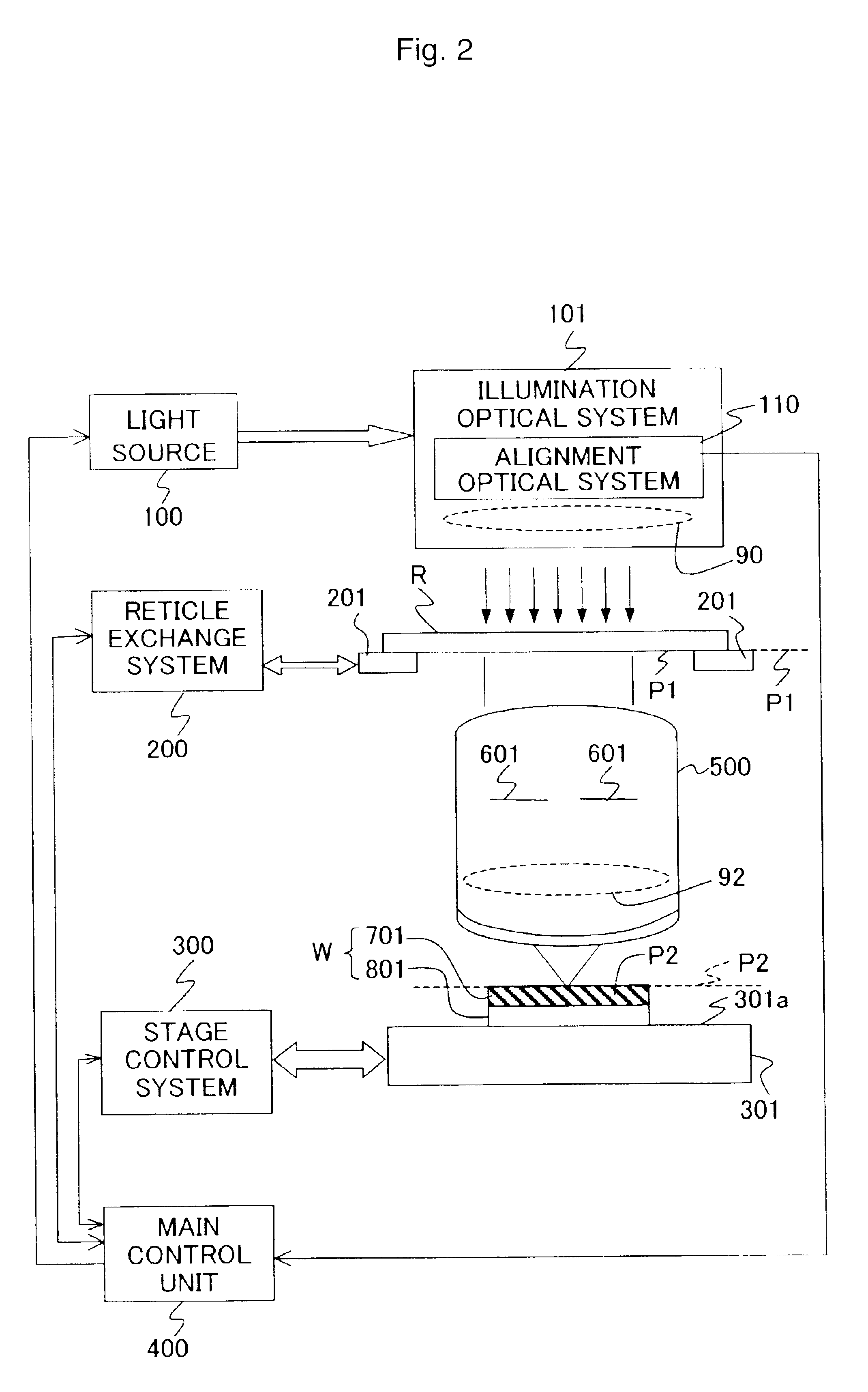Optical element equipped with lanthanum fluoride film
a technology of lanthanum fluoride and optical elements, applied in the field of optical elements, can solve the problems of fluorine deficiency, complex control of reaction, fluorine deficiency in vapor deposition film,
- Summary
- Abstract
- Description
- Claims
- Application Information
AI Technical Summary
Benefits of technology
Problems solved by technology
Method used
Image
Examples
first embodiment
A fluorite (CaF.sub.2) single crystal substrate was prepared as a material for an optical element for the vacuum ultraviolet light. At first, the X-ray diffraction was used to measure the direction of the fluorite single crystal substrate in which the (111) crystal plane is positioned. The substrate was cleaved in parallel to the measured (111) crystal plane to expose the (111) crystal plane. Subsequently, an LaF.sub.3 film was formed to have a film thickness of 500 nm on the exposed (111) crystal plane by means of the resistance heating type vacuum deposition method as described below. Crystal grains of lanthanum fluoride, which were used as a raw material, were introduced into a vapor deposition boat made of molybdenum. The substrate, on which the (111) crystal plane was exposed, was arranged at a position opposed to the vapor deposition boat. Subsequently, the raw material fluoride crystals were evaporated by applying the electricity and heating the vapor deposition boat while he...
second embodiment
A sample was manufactured, in which an LaF.sub.3 film was formed on a fluorite single crystal substrate in the same manner as in the first embodiment except that a plane inclined by 15 degrees from the (111) crystal plane of the fluorite single crystal substrate was exposed by the cleavage, and the LaF.sub.3 film was formed thereon. The X-ray diffraction analysis was performed for this sample. As a result, when the film formation plane of the fluorite as the underlying base was inclined by 15 degrees from the (111) plane, the (00L) plane of the LaF.sub.3 film grown on the film formation plane was also precisely inclined by 15 degrees. In other words, the LaF.sub.3 film was subjected to the C-axis orientation in the direction inclined by 15 degrees from the film formation plane. That is, it is appreciated that the LaF.sub.3 film is progressively grown in accordance with the crystalline orientation of CaF.sub.2 which serves as the underlying base in every sense not in accordance with ...
first modified embodiment
A sample was manufactured in the same manner as in the first embodiment except that the fluorite substrate was replaced with an SrF.sub.2 substrate. The sample was evaluated in accordance with the method described above. As a result, it was revealed that an LaF.sub.3 film formed on a (111) plane of the SrF.sub.2 substrate was subjected to the crystal growth in the C-axis direction, and LaF.sub.3 film, which was dense equivalently to the bulk, was formed, probably for the following reason. That is, it is considered that the crystalline structure of SrF.sub.2 resides in the fluorite type cubic system which is the same as that of the fluoride, and the lattice constant is represented as a=0.57996 nm which is close to the lattice constant of the fluorite.
PUM
| Property | Measurement | Unit |
|---|---|---|
| temperature | aaaaa | aaaaa |
| wavelengths | aaaaa | aaaaa |
| wavelength | aaaaa | aaaaa |
Abstract
Description
Claims
Application Information
 Login to View More
Login to View More - R&D
- Intellectual Property
- Life Sciences
- Materials
- Tech Scout
- Unparalleled Data Quality
- Higher Quality Content
- 60% Fewer Hallucinations
Browse by: Latest US Patents, China's latest patents, Technical Efficacy Thesaurus, Application Domain, Technology Topic, Popular Technical Reports.
© 2025 PatSnap. All rights reserved.Legal|Privacy policy|Modern Slavery Act Transparency Statement|Sitemap|About US| Contact US: help@patsnap.com



